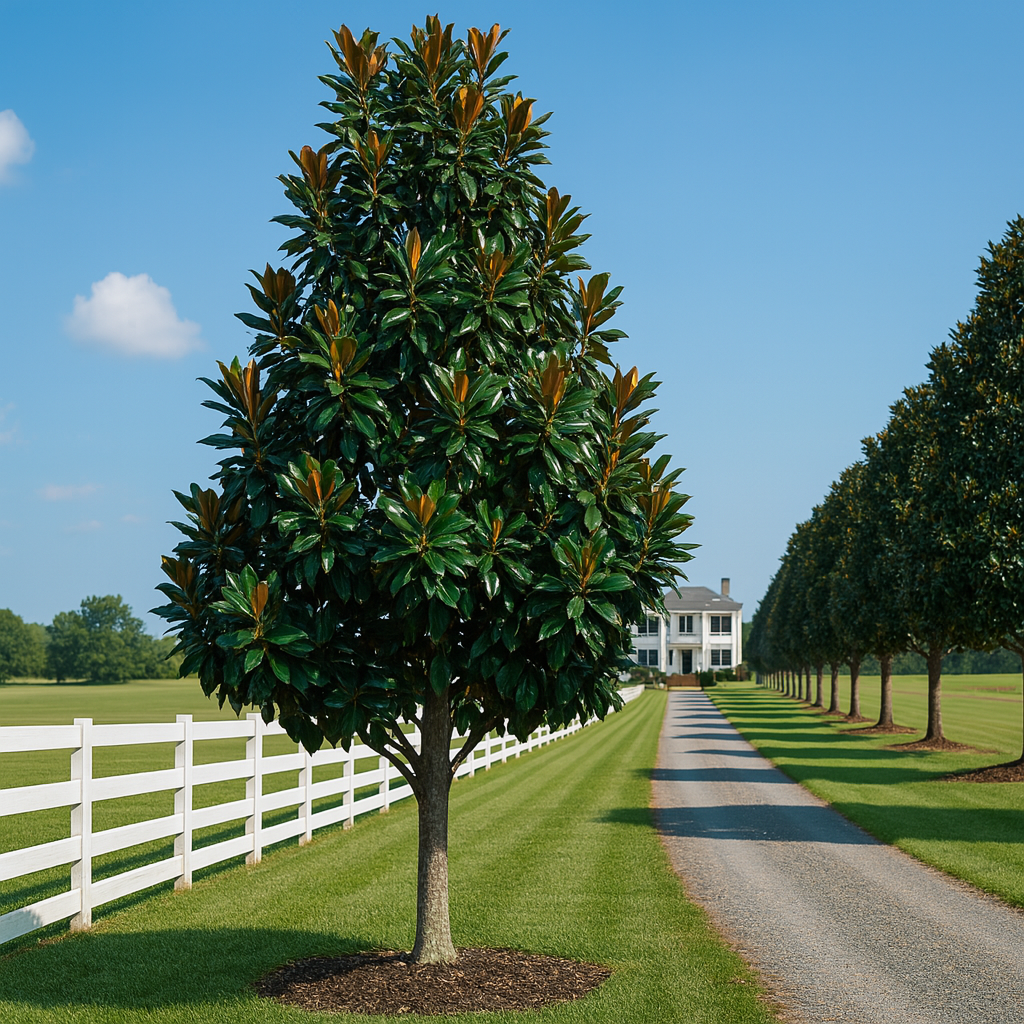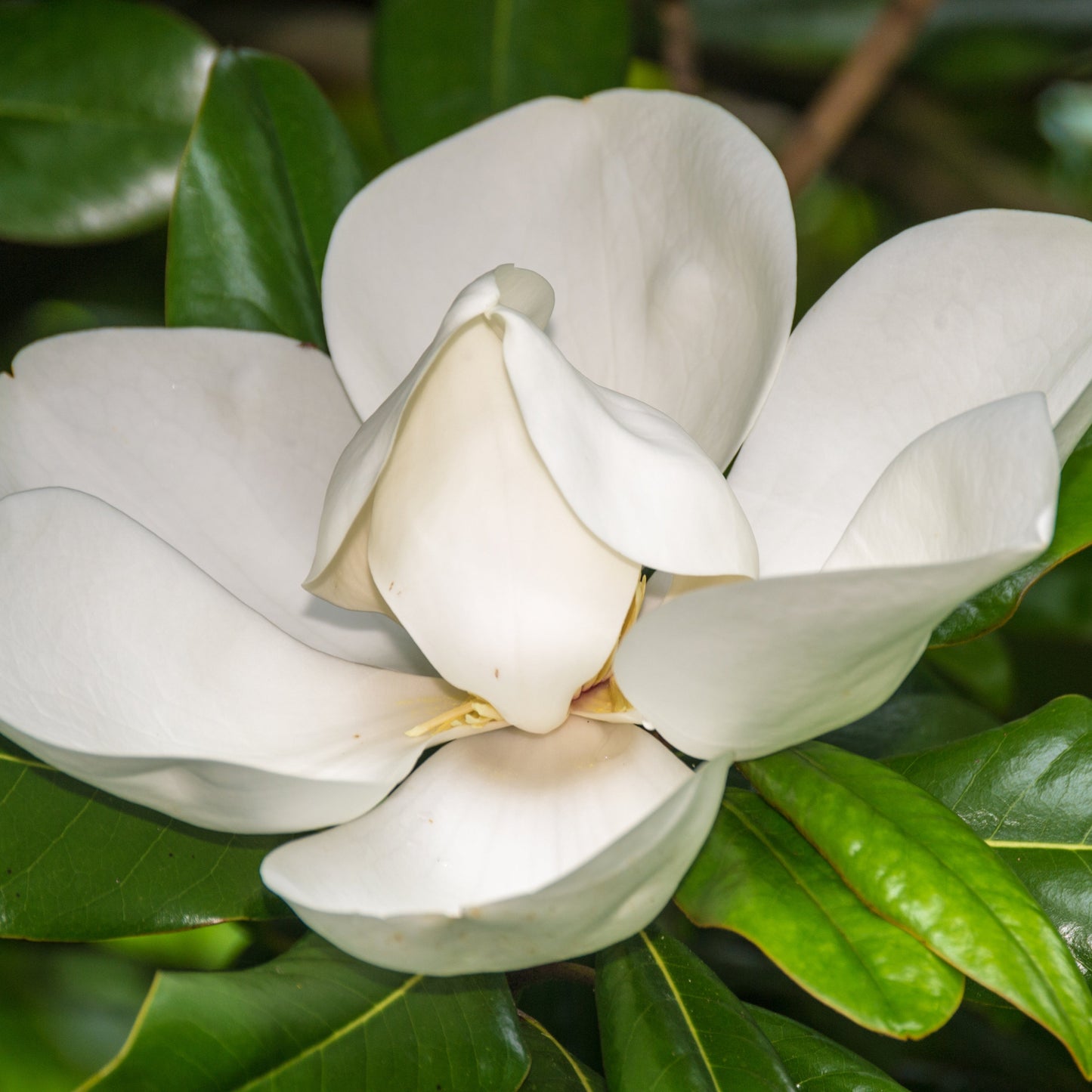Limited Quantities - Reserve Now For Fall
-
Intermediate Zones 6-10

-

Southern Magnolia Tree
Southern Magnolia Tree
Couldn't load pickup availability
Magnolia grandiflora
Southern Magnolia Tree
The Southern Magnolia Tree is a timeless Southern icon, known for its glossy evergreen foliage, towering form, and massive, fragrant white blooms. Its elegant year-round presence and showy summer flowers make it a favorite for estate-style landscapes, formal gardens, and wildlife-friendly plantings.
With strong structure, deep roots, and classic beauty, this tree is perfect for shade, screening, or specimen use—especially in Southern and coastal regions where its heat tolerance, pollinator support, and evergreen appeal can truly shine.
Southern Magnolia Tree Overview
| Attribute | Details |
|---|---|
| 🌿 Botanical Name | Magnolia grandiflora |
| 🏷️ Common Names | Southern Magnolia, Bull Bay |
| 🌳 Mature Height | 50–80 feet |
| 🌐 Mature Width | 30–40 feet |
| 📈 Growth Rate | Moderate (1–2 feet per year) |
| ⏳ Lifespan | 80–120+ years |
| 🧊 USDA Zones | 6–10 |
| ❄️ Chill Hours | 100–200 hours |
| ☀️ Sun Preference | Full sun to partial shade (best flowering in full sun) |
| 🧱 Soil Type | Moist, well-drained loam, clay, or sandy soils |
| ⚖️ Soil pH | Slightly acidic to neutral (5.5–7.0) |
| 💧 Water Needs | Moderate; prefers consistent moisture |
| 🌸 Flower Color | Creamy white, 8–12" diameter, fragrant blooms in late spring–summer |
| 🐝 Pollination | Attracts bees, beetles, hummingbirds, and native pollinators |
| 🌿 Growth Habit | Pyramidal when young; broad and majestic with age |
| ↔️ Spacing | 25–40 ft for full canopy development |
| 🏡 Landscape Uses | Shade tree, specimen tree, foundation anchor, wildlife planting |
| 🧹 Maintenance Level | Low to moderate |
Environmental Benefits
🌸 Provides large, fragrant blooms that attract diverse pollinators
🪶 Offers dense shelter and nesting habitat for birds and small mammals
🌿 Functions as a year-round evergreen windbreak or privacy screen
🌎 Supports soil health, carbon capture, and native biodiversity
Pros & Cons
| ✅ Pros | ⚠️ Cons |
|---|---|
| 🌿 Evergreen foliage for year-round beauty and screening | 🍃 Leaf and flower drop can create cleanup needs in formal areas |
| 🌸 Giant, fragrant flowers attract pollinators and attention | 🪵 Large mature size not ideal for small landscapes |
| 🧬 Heat-tolerant and thrives in humid Southern climates | ✂️ Lower limbs may need pruning for clearance in lawn settings |
| 🏡 Long-lived and highly adaptable across USDA zones | 💧 Requires consistent watering during establishment |
| 🌞 Provides excellent shade and ornamental value | ❄️ Marginally hardy in colder zones without protection |
Planting & Care Guide
🛁 Water deeply before and after planting; maintain even moisture
🕳️ Dig a hole twice as wide as the root ball; plant at original soil depth
🌾 Mulch 2–3 inches around the base to conserve moisture and protect roots
💦 Water regularly during the first 2–3 years; reduce as tree matures
✂️ Prune in late winter to remove lower branches or shape if desired
🧪 Fertilize in early spring with an acid-loving tree fertilizer
The Southern Magnolia Tree is a true Southern showpiece, offering grandeur, fragrance, pollinator support, and evergreen elegance for decades to come. Whether you're planting it as a heritage centerpiece, natural screen, or wildlife anchor, this classic beauty never goes out of style.
Share




